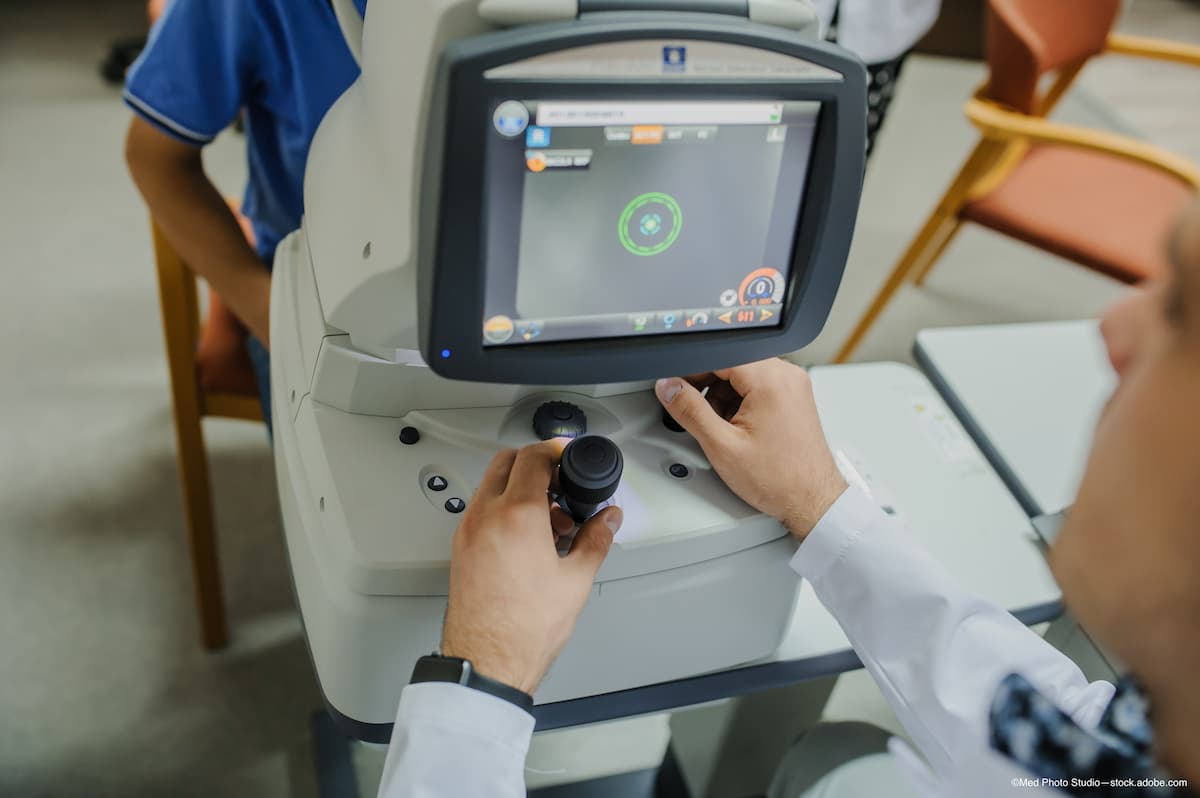Diagnosing Parkinson’s disease aided by OCT/OCTA ocular biomarkers
Imaging study revealed specific retinal and choroidal changes associated with the disease.
Reviewed by Dr Sharon Fekrat and Dr Dilraj S. Grewal.

There is no single diagnostic test for Parkinson’s disease (PD), and neurologists often rely on the patient’s response to medications to differentiate the disease from conditions with similar symptoms. However, investigators at Duke University, North Carolina, United States, have taken a step towards establishing an adjunctive approach in a study utilising retinal imaging to diagnose PD.
Dr Cason B. Robbins of the Department of Ophthalmology at Duke University School of Medicine in Durham, North Carolina, US, was the lead author of the study. He was joined by Dr Sharon Fekrat, professor of ophthalmology, and Dr Dilraj S. Grewal, associate professor of ophthalmology.
Dr Robbins evaluated the retinal microvascular and choroidal structural changes in the eyes of patients with PD.1 The investigators used enhanced-depth optical coherence tomography (OCT) as well as OCT angiography (OCTA), both non-invasive technologies, to evaluate patients who had received a clinical diagnosis of PD, in order to identify differences between patients with PD and healthy controls.
The investigators noted indications from previous study results that cerebral small vessel disease may be a potential risk factor for development of PD, and PD has a higher prevalence of cerebral ischaemic lesions.2-4
Study outline and findings
Participants were enrolled at the Duke Neurological Disorders Clinic. The 69 patients (124 eyes; mean age 71.7 years) had received an established clinical diagnosis of PD. The study also included 137 cognitively healthy controls (248 eyes; mean age 70.9 years). All the patients underwent OCT and OCTA.
The investigators assessed the superficial capillary plexus vessel density (VD) and perfusion density (PFD) within the Early Treatment Diabetic Retinopathy Study (ETDRS) 6×6-mm circle, 6×6-mm inner ring and 6×6-mm outer ring, and the foveal avascular zone. They also measured the thickness of the retinal nerve fibre layer; the macular ganglion cell/inner plexiform layer and the central subfield; the subfoveal choroidal thickness; total choroidal area; luminal area; and choroidal vascularity index (CVI).
The results showed that compared with the healthy sex- and age-matched controls, the VD and PFD were significantly lower in the patients with PD in the 6×6-mm ETDRS circle (P=0.3 and P = 0.4, respectively) and in the 6×6-mm inner ring (P = 0.003 and P = 0.004, respectively).
The total choroidal area and luminal area were larger in the patients with PD (P=0.1 and P=0.2, respectively). The CVI was lower in the patients with PD. The results did not show differences in the retinal nerve fibre layer or ganglion cell layer thickness or the subfoveal choroidal thickness; the latter finding differs from the results of some other studies.
The investigators pointed out that, when the current findings are combined with the clinical history and other tests, the choroidal and retinal microvascular imaging findings “may hold the potential to improve clinician confidence in the diagnosis of PD.” They added that the findings highlight the need for further research into retinal imaging as a potential novel biomarker for individuals with neurodegenerative diseases such as PD.
“Future long-term studies that characterise the natural history of microvascular and structural retinal changes in individuals across the clinical spectrum of PD [are] warranted,” they concluded. “Such studies may help clarify whether these imaging findings may be useful as biomarkers for the onset of PD.”
Sharon Fekrat, MD
e: Sharon.fekrat@duke.edu
Dr Fekrat has no financial interest in this subject matter.
Dilraj S. Grewal, MBBS
e: dilraj.grewal@duke.edu
Dr Grewal has no financial interest in this subject matter.
--
References
1. Robbins CB, Thompson AC, Bhullar PK, et al. Characterization of retinal microvascular and choroidal structural changes in Parkinson disease. JAMA Ophthalmol. 2021;139:182-188.
2. Guan J, Pavlovic D, Dalkie N, et al. Vascular degeneration in Parkinson’s disease. Brain Pathol. 2013;23:154-164.
3. Van der Holst HM, van Uden IWM, Tuladhar AM, et al. Cerebral small vessel disease and incident parkinsonism: the RUN DMC study. Neurology. 2015;85:1569-1577.
4. Song IU, Lee JE, Kwon DY, et al. Parkinson’s disease might increase the risk of cerebral ischemic lesions. Int J Med Sci. 2017;14:319-322.
Related Content: Imaging | Ophthalmology | Diabetic Retinopathy
Newsletter
Keep your retina practice on the forefront—subscribe for expert analysis and emerging trends in retinal disease management.